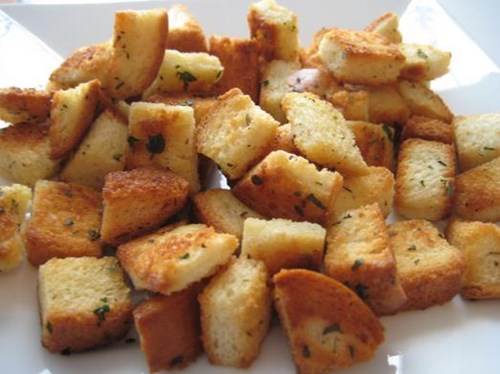We say that this sweet bread doesn't need kneading because what you really do is chasing dough with a spoon, and when dough has arrived, you don't need much time for further preparation and the best thing is that it allows preparing dough from the evening.
Ingredients:
Dough
For the filling
Preparation:
Filling
In a bowl, mix the walnuts, sugar and cocoa powder.
Chop jelly candies or candied fruit.
Note
- While the dough is very soft when we are preparing it, after it has arrived it's excellent for work.
- Instead yolk, you can easily coat kozinjak with egg white.
- I strew vanilla sugar on top because it doesn't burn nor melt
Dough
- 500 g flour
- 300 ml milk
- 100 g butter
- 100 g sugar
- 7 g instant yeast or 20 g fresh
- 3 yolks
- 1 vanilla
- 1/2 teaspoon salt
- grated lemon zest
For the filling
- 200 g crushed walnuts
- 20 g cocoa
- 80 g powdered sugar
- 100 g jelly candy or candied fruit
Preparation:
Filling
In a bowl, mix the walnuts, sugar and cocoa powder.
Chop jelly candies or candied fruit.
- Melt butter on fire and move aside to cool.
- Dissolve yeast in a lukewarm milk, add the sugar and vanilla, mix. Then add lightly mixed yolks and mix well Add the melted butter, mix, add the flour, salt and grated zest. Mix well with a spoon. You'll get a rare dough. Cover well with plastic wrap and close with a lid if the container.Place in the refrigerator until morning. It can stand in the refrigerator up to 24 hours.
- Before preparing kozinjak, remove the dough from the refrigerator and let it stand at room temperature to warm up and to loosen. Pour dough on a floured surface and divide into two parts.
- Divide filling into two parts too.
- Roll out two rectangular crusts, which should be neither thin nor thick. Sprinkle the first filling from walnuts, sugar and cocoa on crusts, then sprinkle above chopped jelly candy or candied fruit.
- Wrap the rolls like a braid and place in a mold greased with butter and coated with baking paper, cover and leave to reach for at least 2 hours.
- Then, brush with egg yolk and sprinkled with vanilla on top - put to bake in a preheated oven at 200 C degrees for 10 minutes, then reduce heat to 180 C degrees and let bake for 15 minutes, again reduce the oven temperature to 170 C degrees and now let it bake for another 20-25 minutes. If you notice that dough becomes too red, cover mold with baking paper.
Note
- While the dough is very soft when we are preparing it, after it has arrived it's excellent for work.
- Instead yolk, you can easily coat kozinjak with egg white.
- I strew vanilla sugar on top because it doesn't burn nor melt






































